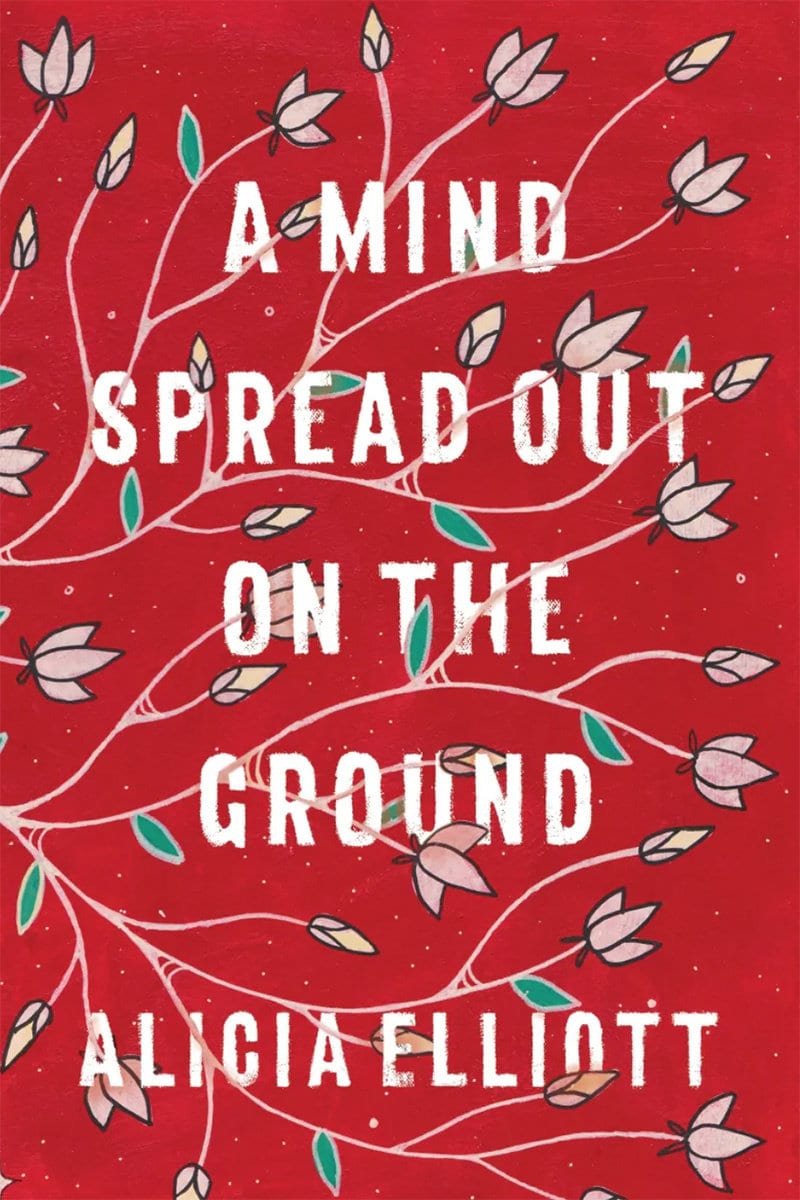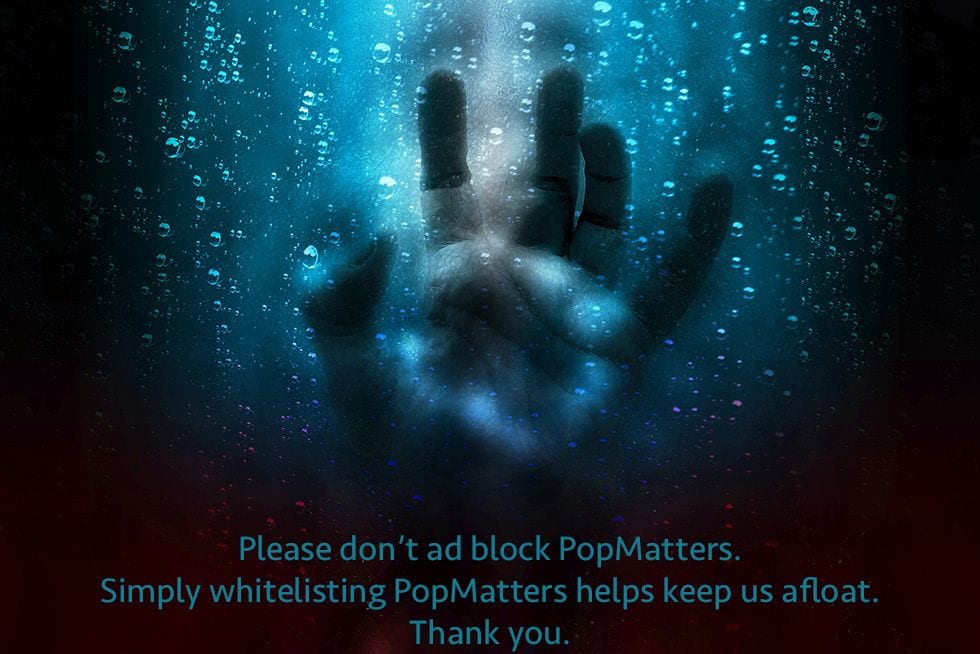
A Mind Spread Out on the Ground is the title of a new essay collection from Ontario-based Haudenosaunee writer Alicia Elliott. Elliott’s essays weave the personal with the political, drawing on her background and life experiences to explore a range of topics: colonialism, racism, mental health and depression, abuse, sexual assault, poverty and capitalism, and more. They’re elegantly written, constructed with a fine attention to style while remaining rooted in a profoundly honest, unalloyed anger.
The titular essay refers to a translated Mohawk phrase for the term ‘depression’, and underscores one of the book’s recurring themes: the pervasive role colonialism and settler genocide against North American Indigenous peoples has played in fuelling and enforcing today’s enduring realities, from mental health crises to malnutrition to abuse. “Both depression and colonialism have stolen my language in different ways,” she writes.
The essays are not just powerfully personal, but intelligent and stylistically innovative as well. A stand-out piece, “Dark Matter”, draws on Elliott’s interest in space and astronomy to compare the operation of racism in our world to the elusive role of dark matter in the universe: scientists know it exists, that it’s pervasive and connects everything, yet we can neither see it nor understand, really, what it is and how it operates.
“Racism, for many people, seems to occupy space in very much the same way as dark matter: it forms the skeleton of our world, yet remains ultimately invisible, undetectable.”
Elliott also delivers stand-out critiques of racism and tokenism in literature, and the narrow and stereotypical caricatures which colonial literary circuits produce. As a writer, she struggles on the one hand against misperceptions that Indigenous writers and cultural creators enjoy special privileges, that there exists “some half-assed literary affirmative action”, which ushers Indigenous writers into publishing deals (not the case, she observes, pointing out the enduring dearth of Indigenous writers in every iteration of literary canon). And yet on the other hand, when Indigenous writers are taken seriously, their work almost inevitably remains constrained within a narrow literary sphere delimited by what publishers think Indigenous writers can and should write about, and by the ways in which their identity is expected to drive their work.

The problem with ‘diversity’ in publishing, she explains in “On Seeing and Being Seen”, is that it “is not about letting those who aren’t white make whatever art matters to them and their communities.” Rather, she says, drawing on the work of performance artist Tania Cañas, it’s about making sense of difference “through the white lens.”
“It’s the literary equivalent of ‘ethnic restaurants,'” writes Elliott. “[T]hey please white people because they provide them with ‘exotic’ new flavours, but if they don’t appease white people’s sensitive taste buds they’re not worth a damn.”
In “Not Your Noble Savage” she picks up the analysis again, dissecting “literary colonialism: insidious criticisms – almost always from non-Indigenous people – that not only reflect but reinforce troubling attitudes of colonial ownership over Indigenous people within the literary community. These include policing what Native writers can write about, and even whether they count as Native at all… those enforcing literary colonialism want us to stick to our script.”
“Settlers prefer this stereotypical, impossible image because it means they can outsource their guilt. Instead of actually dealing with the consequences of historical genocidal policies – policies that are still in place – they can pretend that assimilation settled over our people like a gentle fog. It was entirely natural; no one is to blame. Certainly not them.”
In the essay “Sontag, in Snapshots” she extends her analysis to photography, exploring the aggressions and colonial forms produced by that medium.
While her personal essays are profoundly moving and deeply important, Elliott is at her best in these critical essays, drawing on Indigenous and anti-colonial analysis to pry open innovative insights on creative endeavors like literature and photography, and the ways in which they aid and abet the political operations of colonialism when allowed to operate unchallenged. “Sontag, in Snapshots” offers examples of ways in which photographers have struggled to produce a decolonizing method to the discipline, along with their failures and successes.
The final essay, “Extraction Mentalities”, adopts a more experimental writing mode, building into a sort of participatory essay which implicates the reader in the author’s reflection. Innovative and insightful, Elliott’s work reveals an important dedication not just to content but to style, an often neglected element in today’s burgeoning marketplace of personal essay collections.
Dark Matter
Elliott and I come from very different experiences and backgrounds, but we share one thing in common: we both attended York University, in Toronto, where I spent a few years as a graduate student responsible for teaching and grading undergraduate courses under the supervision of professorial course directors. Reading her reminiscences of student life in Toronto causes me to remember, with visceral clarity, that experience, and especially the tortuous sessions I faced with painful regularity when I was called in by course directors to explain my grade distribution, which routinely exceeded the averages we were told to aim for. I would sometimes sit for hours with these professors – world-renowned scholars in equity, anti-racism, and feminism – who would berate me for giving too high marks, and then proceed student-by-student through the course grades, aiming to find enough students to knock down a few percentage points to match their assigned grade quotas.
There was nothing wrong, technically, with a course that produced a higher-than-average number of A’s and B’s, but there was immense peer pressure from departmental colleagues not to rock the boat; and for professors wanting to avoid trouble or seeking tenure, rocking the boat on behalf of their students was not something they were willing to do. So, these professors — who almost never actually engaged personally with the students – would quiz me on why I gave certain students an A, or a high B. This student didn’t “act” like an A student; didn’t “engage properly” in class, didn’t “conduct themselves” the way a top student should. They’d asked a weird question or not bothered to engage in particular discussions.
What these professors meant, of course, was that the students in question didn’t look like ‘A’ students: they looked poor, they were racialized, they didn’t meet their standards like the sophisticated, smooth-talking white settler students such profs routinely swoon over. Or perhaps they didn’t respond with jovial, properly detached enthusiasm during lectures about settler colonialism, racism or sexual abuse. Perhaps they let their feelings and first-hand experiences interfere with their objective analysis. And it was always, without fail, the black students, the immigrant students, the Indigenous students, the poor students, that these professors would target for grade reduction. Grade curving and average distribution remain prominent, if blunt, stealth tools in the academy’s toolkit for preserving colonial and racist hierarchies in the post-secondary system and the labour market it produces.
I realize, on reading Elliott’s essays, that here was the pervasive working of that invisible dark matter she refers to – permeating and shaping the universe and our interactions with each other. And much as I always dreaded the inevitable reckoning for the grades I gave, Elliott conveys with painful clarity what it’s like to be on the other end of that relationship, living a life in which marginalization has become so naturalized that it automatically shapes one’s ways of engaging with the world. Imagine having to face every single day, as so many of the students I met did, the naturalized reality of a world in which professors grade down and otherwise exclude Indigenous and racialized students by instinct, not even realizing that in their detached judgement they are enacting the very same racist judgements they publish about to such great and lucrative effect.
Dark matter, indeed.
I digress, but perhaps the point of these essays, for settler readers, is to encourage them to digress; to deviate more often from their conditioned and naturalized ways of engaging in the world, and from the legacy of generations of colonial privilege. To question the tacit assumptions with which they act, talk, write, and understand the world. It’s the mark of a skilled writer to induce such everyday digressions in their reader, and Elliott’s work achieves this fundamental purpose to powerful effect.
Love Is a Process
On first read of these essays, it’s the anger that is striking, palpable. And for good reason – it’s a mark of Elliott’s ability to connect with her audience that this artfully articulated rage builds an empathic link with the reader.
But a deeper read reveals that these essays are just as much, if not more, about love. Her essays about her parents and other relatives reveal the difficulty of balancing all the hurt and pain with the love she also felt for them growing up. The essay “Boundaries Like Bruises”, written as a sort of decolonizing love letter, illustrates the obvious, which so few people seem to get: decolonization, like love, is not a goal to be achieved but a process to be worked at.
“Antiracism is a process. Decolonial love is a process. Our love is a process. I never want it to end.”
In “34 Grams Per Dose”, her reflections on diet, food poverty, and epigenetics, she counters the depressing reality of intergenerational trauma with a note of hope, grounded again in love:
“[I]f intergenerational trauma can alter DNA, why can’t intergenerational love?”
In the end, even her critique of Can-Lit is grounded in love. “Writing with empathy is not enough. It never has been,” she observes. “To truly write from another experience in an authentic way, you need more than empathy. You need to write with love.”
With its eloquent combination of love, anger, and impassioned insight, Elliott’s essays are a must read.

